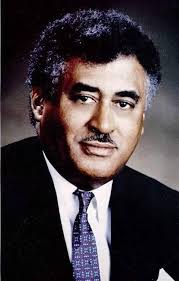
by Gayle Andrews

Dr. Frederick S. Humphries, Sr., epitomized the definition of an influencer. His tenure as the president of Florida A&M University was a whirlwind of academic, social, and civil rights progress that would come to define Black exceptionalism. He singlehandedly dismantled the stereotypes surrounding Historically Black Colleges and Universities while elevating academic standards, equipping thousands of students with the tools to succeed in the world. While the Fred Humphries “Golden Era” will be hard to duplicate, his statue is a fitting reminder that “Excellence with Caring” is not a symbol; it is a mandate to stay in the fight to preserve the legacy.
For many of us who knew him, there was never any doubt about his devotion to FAMU. And he constantly reminded us of the institution’s importance. The common thread was that we would always try to leave the room before he issued another “Action Item” assignment. We were rarely successful, and I’m convinced he’s still telegraphing us now! The family asked me to write Dr Humphries’ obituary four years ago, and I was honored to tell a small part of his remarkable story.
The young man from the port town of Apalachicola on Florida’s panhandle would have an extraordinary impact on many thousands of Black students, their families, and misconceptions about Black capabilities.
Most people would be surprised to know that Humphries was influenced by diverse circumstances and people who lived in this unusual rural community. He attended Holy Family School, one of the few Black Catholic grammar schools in the south, ruled by Black nuns who were relentless disciplinarians. Once, Humphries’ school scored so high on an exam, the Monseigneur suspected cheating. He gave them a different test, and their scores were even better. The small town had a reputation for producing Black high achievers. But Fred Humphries said it was not enough for his high school math teacher, Charlie Watson, who constantly pushed him to “do better” and to always “strive for excellence.” Construction work in Apalachicola introduced him to Ruffin Rhodes. Rhodes talked incessantly about the power of education. Finally, Humphries asked, “What’s the highest degree of educational achievement?” Rhodes said, “A doctorate.”
With that, Humphries was off to Florida A&M College, which became a university during his time there. He was a popular student. Tall, handsome, and smart, known for his competitive spirit on the basketball court and in the classroom. He enjoyed getting better grades than his big-city friends. To his buddy Carl Kirksey from Miami, he asked, “How did you do on that math exam?” Carl said, “I got an 80.” “I got a 95,” was Humphries’s retort. He graduated with honors with a degree in chemistry from FAMU. Humphries began his role as a member of the “First Evers” as the first African American to earn a doctorate in physical chemistry from the University of Pittsburgh.
After teaching chemistry at FAMU in 1974, he became president of Tennessee State University (TSU), an arch-rival of the Rattlers. Humphries was president when the state wanted to merge TSU with the Nashville campus of the University of Tennessee, a White school. It happened, but the federal land-grant status of TSU protected it from a hostile takeover of sorts by a White institution. Tennessee State maintained its administrative status and brand.

That episode was not Humphries’s first bout with suppression. And while he treated institutional racism with indifference, he recognized it as a worthy adversary to be outmaneuvered. That was his approach, and it was a successful strategy.
When he returned to his beloved FAMU as president in 1985, it was the beginning of a remarkable journey that would elevate the university and Historically Black Colleges and Universities to their rightful status as valuable institutions of higher learning. Humphries’ commanding presence, innovative ideas, and enthusiasm were a powerful magnet attracting students, faculty, corporations, alumni, and research dollars at a level never before realized. And still holds the record 24 years later.
He was defiant and unrelenting when advancing FAMU. Here’s what happened.
During the Humphries years from 1985 to 2001, FAMU burst onto the scene as an HBCU with unmatched academic credentials. First, he increased enrollment with an unorthodox recruitment style that was legendary. He would approach young people on the streets of Europe and Africa, touting the FAMU brand. The University’s dominance of National Achievement Scholars would upend academic norms. FAMU led the nation with these scholars outpacing Harvard, Yale, and Stanford in 1992, 1995, 1997, and tying Harvard in 2000. But, also part of the big picture was Humphries’ commitment to disadvantaged students whose untapped potential would be nurtured at FAMU. That was Fred Humphries’ dream.
The intrinsic strength of an HBCU education was a powerful weapon for Humphries, whose motto, “Excellence with Caring,” resonated nationwide. His defiance of racial barriers was a startling rebuke to the Board of Regents and all those he viewed as a threat to FAMU. Humphries’ FAMU engendered the kind of can-do spirit and self-esteem the next generation needed to compete in a contentious marketplace.
During his presidency, Frederick Humphries raised over $157 million, awarded 873 Life-Gets-Better Scholarships, and increased Foundation revenues tenfold. FAMU was named College of the Year by Time Magazine and the Princeton Review. Grants jumped from $8 million to $62 million, and enrollment soared from 5,000 to 12,000. Humphries was always focused on FAMU’s research profile, but now was able to strengthen engineering, the sciences, and pre-law. Of course, he successfully restored the FAMU College of Law in 2000.
The 8th President always credited an excellent faculty for playing a significant role in the success of his efforts. The expansion of graduate studies is a testament to that fact. The most extraordinary part of the Humphries legacy was the elevation of FAMU to prominence, which in turn established the relevance of all of America’s HBCUs.
The Frederick S Humphries statue will be unveiled on Friday, October 17, 2025, at 8:00 am on the quadrangle near the Eternal Flame.
Gayle Andrews is a Distinguished Graduate of Florida A & M University and the President of The Black Press Association of Florida.
